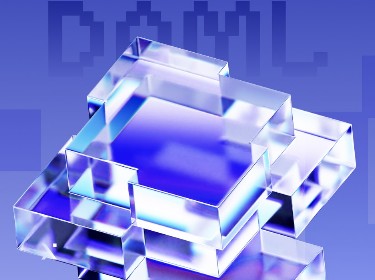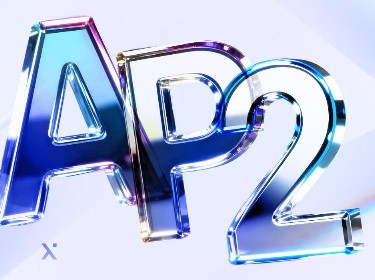For more than a decade, blockchain has been a solid technology used in a variety of industries, and it still continues to evolve. Does Hedera Hashgraph have what it takes to replace it?
Although the idea of a cryptographically secured chain of blocks was first introduced at the beginning of 1990s, blockchain technology gained its prominence with the advent of Bitcoin in 2008. Hedera Hashgraph, in its turn, was initially released in 2017, nine years after blockchain began its journey in the tech world.
Despite such an age difference, it isn’t fair to say that some technology is more mature than others, as these days any tech can evolve very quickly and efficiently. It only depends on how much effort is consistently invested in its development.
Our blockchain consulting specialists helped comprise this article to see how far these two DLTs have come, compare Hashgraph vs blockchain from a technical and performance standpoint, and decide which one is winning this race.
What is DLT?
Distributed ledger technology, or DLT, implies a decentralized database maintained by people (nodes) located in different places. These nodes work together to achieve one common goal — to keep the network up and running. Essentially they validate, record, and synchronize transactions.
All the data the nodes record is secured by cryptography and cannot be controlled by any central authority. Once the information is recorded, it also becomes immutable, which is a big plus since no one can edit or delete transaction details. This feature is designed to prevent fraud and data breaches.
Hedera Hashgraph and blockchain are both types of distributed ledger technology with their own specific features that we will describe in detail a bit later.
Blockchain and Hashgraph: what are they?
Blockchain is by far the most popular form of distributed ledger technology. Satoshi Nakamoto is considered to be the creator of modern blockchain technology. However, since this is a pseudonym and the person remains anonymous, no one has even known who exactly is hiding behind this name.
As for the technology itself, it works like this: there are nodes that have their own copies of the blockchain and that verify and execute transactions. Once a transaction has been successfully completed, all related data is stored in a block that is then attached to the previous one in chronological order. Thus, a chain of blocks is formed which cannot be changed or deleted.
Since blockchain was first introduced as a technology to enable Bitcoin, many still associate it only with cryptocurrencies, but this is no longer the case. Blockchain technology has already left its mark on numerous industries such as supply chain software development, healthcare, fintech, real estate, gaming, eCommerce, eGovernance, and others.
Regardless of the field that enterprises belong to, if they want to increase the security, transparency, and traceability of their workflows, they often choose blockchain to achieve these goals.
Check out our blockchain development services for enterprises across various industries
So what is Hedera Hashgraph? It is a distributed ledger technology created by Leemon Baird, Founder & Chief Scientist of Hedera Hashgraph and Founder & CEO of Swirlds. The intellectual property rights to Hedera are owned by Swirlds Corporation, so this is a patented, privately owned technology.
This tech represents a slightly different approach. It has a graph structure, not blocks. When nodes communicate with each other, a graph of connections will appear. And, again, instead of storing information in a chain of blocks, Hashgraph stores it in events.
Tech-savvies often refer to Hedera as the next-generation blockchain, even though it hasn’t been as widely adopted yet. We need to dive a bit deeper to find out if Hedera really has the potential to outrun blockchain.
Hashgraph vs blockchain: a detailed comparison
![]()
Despite being the same type of technology, blockchain and Hashgraph have far more differences than similarities. Let’s take a closer look at them.
Programming languages
The biggest difference between the two is that there are languages designed specifically for blockchain, while Hashgraph applications are built in more universal programming languages.
Programmers who have ever worked with blockchain must have heard of Solidity or even learned it themselves. This programming language was developed by the Ethereum team for writing smart contracts on that particular blockchain.
It is worth noting that Solidity requires a learning curve and is not used outside of Ethereum, so this knowledge is rather narrow and specialists writing in Solidity are like gold dust for blockchain companies. At the same time, in the blockchain sphere, it remains one of the most used languages. Vyper can also be applied to write smart contracts on Ethereum.
There is also a programming language called Cadence. It was created specifically for the Flow blockchain. As for more general-use languages, developers also program in Java, JavaScript, Python, C++, C#, Go, and Rust.
When it comes to Hedera Hashgraph, Java, JavaScript, and Go are the languages used the most. This list is obviously longer, but these languages are very familiar to a large developer community, so it won’t be a problem to find programmers for Hashgraph-based applications. In addition, developers can also use Solidity and Vyper to write smart contracts for Hedera.
Consensus protocols and transaction speed
A consensus algorithm is an integral part of any distributed ledger technology, as it is responsible for achieving the necessary agreement between the nodes about the state of the entire system. Apart from this, consensus also directly affects transaction speed and network security.
The two most popular blockchains — Bitcoin and Ethereum — run on the Proof of Work (PoW) consensus protocol. Here, nodes are miners who need to solve complex mathematical tasks in order to add a new block of information to the blockchain. Whoever does it first will earn some crypto.
Several other widely used blockchains such as Flow, Cardano, Polygon, Tezos, and Avalanche utilize the Proof of Stake (PoS) consensus. This algorithm is the number one alternative to PoW. It does not involve mining and requires nodes to stake their coins to participate in the network.
There is also the Delegated Proof of Stake (DPoS) protocol, which is an advanced version of PoS. Notable blockchains such as Tron, WAX, EOS, and Steem are based on this algorithm.
Several other blockchain consensus protocols, a little less popular but still useful and operating, are Proof of History (PoH), Proof of Authority (PoA), and Proof of Elapsed Time (PoET).
Based on examples of blockchains and their transaction speeds, energy consumption and levels of decentralization, we can draw the following conclusions about the aforementioned consensus algorithms:
- Proof of History, Proof of Stake, and Delegated Proof of Stake enable the fastest transaction speeds
PoH-powered Solana demonstrates speeds of up to 50,000 transactions per second (tps), PoS-based Avalanche handles over 4,500 tps, and the WAX blockchain using DPoS processes around 8,000 tps. Meanwhile, PoW is the slowest consensus algorithm: Ethereum’s speed is 30 tps and Bitcoin’s — only 7 transactions per second.
- In terms of energy consumption, DPoS and PoA have the best indicators while PoW is the most energy-intensive
Ethereum, currently based on PoW, consumes 113.01 TWh of electricity per year. DPoS-powered WAX, on the other hand, is 125,000 times more efficient than Ethereum.
- Proof of Work is the most truly decentralized consensus algorithm
The other consensus protocols also claim to be decentralized. However, the conditions nodes operate on may contradict the idea of decentralization. For example, the number of nodes is too small, and if they agree, they can shut down the network; or the system is not very fair because only the nodes with the most staked coins can process the block.
Want to know everything about these blockchain consensus algorithms? Read this article to get into the details
As for Hedera Hashgraph development services, this tech utilizes its own unique Hashgraph algorithm that works in a completely different way from the consensus protocols powering blockchains. This algorithm has one fundamental peculiarity: the “Gossip about Gossip” protocol behind it.
![]()
We all know what gossiping is like: we hear something interesting, we share the news with our friends, these friends tell their friends, but at the same time we always say “But keep it a secret, it’s just a rumor.” Right?
The Hedera Hashgraph consensus works in a very similar way. Once the node communicates with another node, it shares all the information about their communication with another random node. That other node has to share this data with the next random node, and like this the entire network finds out about what’s happening.
Thus, it does look like every person is gossiping about everything they do or hear. From a technical standpoint, nodes are devices that share information on the hash graph. They reach consensus via virtual voting and store data such as timestamp, hashes, and transactions, in events.
This approach to achieving consensus helps to reach high transaction speeds of up to 10,000 transactions per second. Some blockchains such as Solana manage faster transaction speeds, but Hashgraph is a great deal faster than the most widely used Ethereum and Bitcoin blockchains.
Thanks to the Hashgraph consensus, Hedera is also more energy efficient than Ethereum and Bitcoin as it does not require large amounts of computing power.
Smart contracts
Both blockchain and Hashgraph can be used for launching smart contracts. In fact it is impossible to perform transactions without them.
The most prominent feature of blockchain smart contracts is that they are immutable. Let’s say you are a business that is creating a dApp with smart contracts. You want to pre-set certain conditions under which the smart contract will carry out transactions. In this case, developers will build these conditions into the code and smart contracts will automatically execute only the transactions where conditions are met.
Once the transaction is completed and recorded on the blockchain, the data becomes immutable and cannot be changed or deleted. The same goes for smart contracts — once developers deploy them, it is almost impossible to change the code.
With this comes one great advantage: no one can alter the code and change or remove important data. This benefit is very relevant for such areas as banking and finance, voting, and supply chain management. However, it can create difficulties for developers: they need to write the code very carefully, because one mistake will cost them a lot of money and wasted time.
When it comes to Hedera Hashgraph smart contracts, they are immutable, but still optionally upgradeable. This feature was implemented in order to give developers an opportunity to fix bugs, resolve disputes, or introduce upgrades.
Another difference between Hashgraph and blockchain is that Hedera smart contracts are processed in the same order they were received, while on blockchain it often depends on how high a gas price (transaction fee on Ethereum) you are ready to pay, or if the miner chose your transaction first.
Decentralization and accessibility
There is only one truly decentralized blockchain — Bitcoin. Ethereum comes right after Bitcoin in terms of decentralization. According to the Morgan Stanley Wealth Management report, the top 100 addresses hold about 39% of ETH, Ethereum’s cryptocurrency, compared to 14% for Bitcoin. Obviously, Bitcoin is much more decentralized.
Other blockchains are also assumed to be decentralized, but the level of decentralization is even lower. For example, as of July 5, 2022, Solana has 1,823 validators, 27 of whom control more than 33% of the total stake. Theoretically, they could collude and shut down the entire network.
The Blockchain Trilemma is a term coined by Vitalik Buterin, one of Ethereum’s co-founders. The trilemma is that developers are challenged to build scalable, secure, and decentralized blockchains without any of these requirements being overlooked. It is a pretty difficult task from a technical point of view.
This is why we often see blockchains showing high levels of scalability and security, but lacking in decentralization. Or they are decentralized and secure but have scalability issues like Ethereum. The trilemma is something the blockchain community still has to work on.
Hedera Hashgraph, in turn, is only somewhere on the path towards decentralization. At this time, 39 world-renowned organizations, including IBM, Chainlink Labs, Ubisoft, Google, LG, Boeing, and others, own and govern the Hashgraph network. They are members of the Hedera Global Governing Council and each has an equal 2.6% influence on decision making.
In a perfect world, decentralized technology would not have any central authority that could have such a big impact on the network. Hedera claims that it is currently taking steps to become more decentralized.
In terms of accessibility, Hedera is currently a public permissioned platform that plans to become public permissionless. As for blockchain, it can be public, private, or even hybrid.
Check out Echo — a Layer 2 protocol for building decentralized apps using Ethereum and Bitcoin sidechains
Security mechanisms
Strong cryptographic hashing and the blockchain structure itself stand guard over the network’s security. In order to tamper with the network, a potential hacker would need to modify not only the block containing particular data, but also all those associated with it, which is a nearly impossible task. In addition to this, recorded data is immutable and there are simply no buttons to change the information.
Hashgraph technology, on the other hand, uses asynchronous Byzantine Fault Tolerance (aBFT), which is considered the security gold standard because it makes it impossible to tamper with data even if there are malicious actors on the network.
Cryptocurrencies
If we started naming every existing cryptocurrency here, you would never make it to the end of the article 🙈.
The first and largest blockchain-based cryptocurrency is, of course, Bitcoin, with a market capitalization of $377 billion as of July 5, 2022. The second, and you might have guessed it already, is Ether (ETH). Its market cap is $137 billion.
Other popular cryptocurrencies are:
- BNB (Binance)
- XRP (Ripple)
- SOL (Solana)
- ADA (Cardano)
- DOT (Polkadot)
- TRX (TRON)
In all, there are more than 18,000 cryptos hosted on different blockchain platforms.
Regarding cryptocurrencies, their market capitalization and popularity, blockchain is definitely the winner in the Hedera Hashgraph vs blockchain battle, as Hedera hosts only one crypto, HBAR. These coins are used to power Hedera-based decentralized applications, develop micropayment solutions, and secure the network.
The total supply of Hashgraph cryptocurrency is 50 billion, and more than 21 billion of those are already circulating in the market. As of July 5, 2022, this coin’s market capitalization is at $1.3 billion.
What are Hedera Hashgraph use cases and real-life examples?
![]()
Over the years of its existence and successful operation, Hedera Hashgraph has established itself as a fair, fast and secure technology, ideally applicable in areas such as DeFi, asset tokenization, identity management, fraud prevention, and even entertainment. Let’s take a look at several Hashgraph-based applications that are helping to improve these fields.
AdsDax
AdsDax is an innovative advertising solution built on Hedera Hashgraph. This is an open advertising ecosystem where advertisers can create, deliver, and track mobile ad campaigns and connect directly with their consumers, thereby reducing costs associated with intermediaries and possible fraud.
As of July 5, 2022, the platform has verified, logged, and timestamped 4 billion ad events and completed over 1.8 billion crypto payments on the Hedera Mainnet.
Tune.FM
Tune.FM is an ambitious project that aims to create a decentralized Web3 music streaming platform and marketplace where listeners can explore new artists, and artists will be guaranteed streaming royalty payouts.
So far, Tune.FM has launched the JAM token using the Hedera Token Service to provide the opportunity to buy, sell, or trade NFTs, pay minting fees on the future NFT marketplace, and enable real-time micropayments at a fast speed and with extremely low transaction fees.
According to the company’s plans, in 2023 Tune.FM is expected to sign licensing agreements with three music giants such as Universal Music Group, Warner, and Sony in order to help millions of independent musicians join the platform.
Did you know there is also an ASMR NFT marketplace? Check out this unique platform we built for our client
EarthId
EarthId is a decentralized identity management platform whose main goal is to reduce the risk of data theft and fraud. One of the major points that made EarthId choose Hedera over blockchain alternatives is that it is able to meet GDPR requirements for personal data.
This solution allows people to place control of their identity in their own hands, and provides organizations with the ability to verify identities, while at the same time personal identity data complies with global regulatory standards.
To date, the EarthId service supports 4,000 kinds of ID documents in more than 200 countries across the world.
Manetu
Manetu is a consumer privacy management platform built on Hedera Hashgraph. This software protects data while allowing its legitimate business use.
The platform utilizes its proven Vault technology with in-model encryption, which is a powerful way to manage and use sensitive data in the safest way possible. Manetu’s platform also automates data privacy compliance.
What are some key blockchain implementations?
Blockchain use cases start from finance and… well, it’s hard to say if they even end, as more and more blockchain applications keep appearing in completely new areas. Let’s take a look at just a few of them.
Gemini
Gemini is a popular crypto exchange, wallet, and custodian that enables its users to buy, sell, and store digital assets. Founded in 2014 and headquartered in New York, it is regulated by the New York State Department of Financial Services.
As of July 6, 2022, there are 123 cryptos listed on the Gemini exchange. The platform allows its clients to create their own financial portfolio, manage their holdings, and track the prices of top currencies. US clients can even get a Gemini credit card and earn rewards in BTC, ETH, or other cryptocurrencies simply by using the card to pay for their purchases.
Propy
Propy is a company striving to revolutionize the real estate industry by introducing blockchain technology and crypto payments. The platform helps real estate agents, investors, buyers, and sellers to move to automated and paperless processes.
To date, Propy has facilitated $4 billion in US transactions. In May 2022, the platform also launched blockchain title and escrow services for residential real estate transactions in Florida, Arizona, and Colorado.
Patientory
Patientory is an American healthcare technology company for which PixelPlex helped to develop a mobile application based on the client’s blockchain. The Patientory app helps users store, access, and share their medical records in the most convenient and secure way.
The app boasts a myriad of features that can improve users’ health, such as a COVID-19 tracker, personalized fitness and nutrition plans, water drinking reminders, and even a photo diary.
Why was blockchain important for the creation of Patientory? Blockchain provided secure storage of users’ personal data and allowed the introduction of the app’s own currency, called PTOY. Customers can use PTOY to pay for their subscription, and they also get rewarded in tokens when they hit their goals.
MECA
MECA is a Hyperledger Fabric-based platform for managing supply chain radioactive and hazardous materials. Since these materials must be collected and transported carefully and transparently, blockchain technology was the most appropriate option for developing this software.
Research facilities, manufacturers, and hospitals can use the platform to track containers, manage inventory, check if the materials are transported under the right conditions, generate reports and generally follow the complete lifecycle of radioactive sources.
Blockchain vs Hashgraph: who wins the game?
![]()
There are some aspects in which Hedera seems to be more advanced and powerful than blockchain. For example, Hashgraph offers low-cost transactions at $0.0001, extremely low energy consumption, and much faster transaction speeds, especially when compared to popular blockchains like Ethereum.
On the other hand, there are many relatively new blockchains that can boast transaction speeds of up to 50,000 tps, such as Solana. Blockchains based on PoS, DPoS or other non-PoW consensus algorithms are also quite energy efficient.
If we compare blockchain vs Hedera in terms of fairness, PoW-based blockchains are less fair than Hashgraph as they rely on miners who can choose the order of transactions. Hashgraph does not involve miners and uses a consensus based on timestamp, so no one can influence the order of transactions.
PoS blockchains are also not very fair because nodes with more staked coins have a better chance of processing blocks than nodes with fewer coins in the pool. These days, developers are trying to come up with new consensus algorithms that will be fairer.
The only major limitation of Hedera Hashgraph is that it is a patented technology owned and governed in a centralized manner. What’s more, it only allows the creation of networks that have been given permission to join. Hedera is still working on its public permissionless variant.
If your business is looking for a decentralized open source option, then blockchain is definitely a winner here. If you want to develop a permissioned platform, then both blockchain and Hedera Hashgraph could be suitable for your project.
If you’re wondering if Hashgraph will eventually replace blockchain, the answer is probably no, as there are hundreds of different blockchains to choose from and the blockchain development community is continuously improving this technology.
In addition, blockchain technology is obviously more widely used than Hedera Hashgraph, which means that there are many more technical specialists who have already honed their skills in developing blockchain-based applications. So, it will be easier to find blockchain professionals than developers working with Hedera.
Final thoughts
Hedera Hashgraph and blockchain are definitely two technologies worth considering for adoption in an innovation-driven business. You can make a choice based on your company goals and needs or you can delegate this important task to a team of professionals.
Our PixelPlex specialists have been developing custom blockchain-powered applications for almost a decade and we are always ready to help your business as well. We can advise you on the differences between Hedera and blockchain, analyze your business case and offer you the most effective and profitable solution.
Contact us for more information and start working on your groundbreaking project today!




